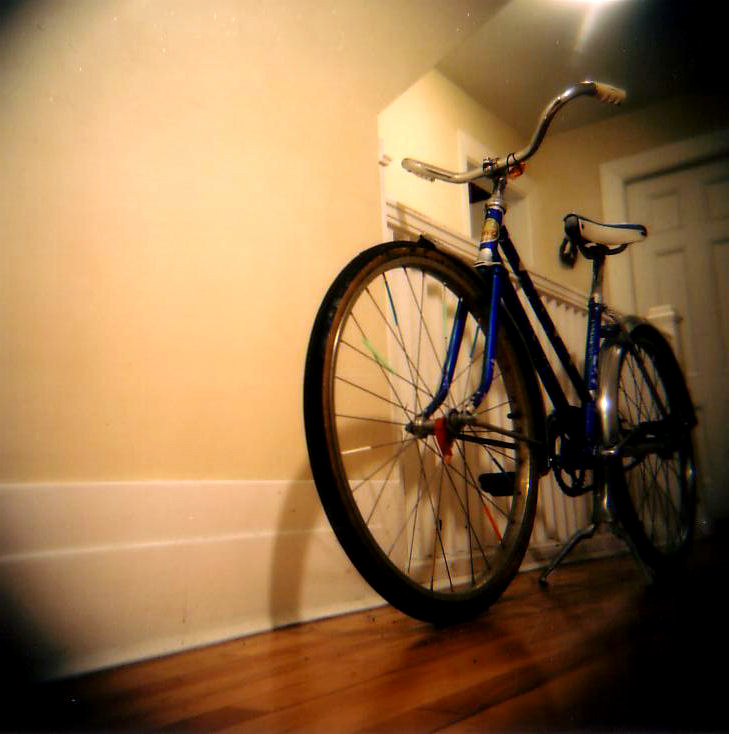I purchased two cameras to get started: a
Holga 120N from ebay with a cable release ($40) and a used Canon Rebel GII from Kijiji ($80)
A friend of mine stumbled me a link to the whites stripes web site where they have special edition Holgas for sale. They had a lot of sample photos that were really neat. Holgas are known for being terrible cameras. They were made in the 80s by a chinese company but failed in the consumer market because of their blurry images that frequently exhibited light leaks. That's all part of the charm though. A lot of people that shoot on a holga are into new and experimental photography. These are a few of the common "mods" that I have tried out. They allow for some pretty neat and unconventional photos.
35mm film

This shot was created by putting 35mm film in the holga (its native format is 120). A good tutorial can be found here.
Cross Processing

Cross processing is when you develop one type of film in the solution typically used for another. For example, this was slide film shot in the Holga and developed in regular color negative film. This method usually yeilds greater contrast and saturation than with regularly processed film, as well as a dramatic color shift in some cases. There are plenty of great Flickr groups out there with all kinds of xpro shots.
Vignetting

This is achieved simply by removing the mask from the Holga so that it no longer produces crisp edges.
Nowadays, you can see lomoheads and hipsters the world over with these plastic beauts. They're cheap, come in a wide variety of colors, and when you're toting an eye-catching analogue camera around your neck at a party it makes people think, "gee whiz, so and so sure is trendy." And that's just swell.
By far though, the best thing I got out of the Holga is a greater understanding of photography. Since it is such a terrible camera, you have to know how it works to take decent shots. That means you have to understand it's relatively narrow aperture (~F8) and quick shutter speed (~1/110) means you need to take a few measures to properly expose your subject. That can include manually determining shutter speeds in low light, using a flash, picking the right film speed, etc.
LINKZZ:
My flickr
A great way to understand exposure
Holga know-it-all

No comments:
Post a Comment